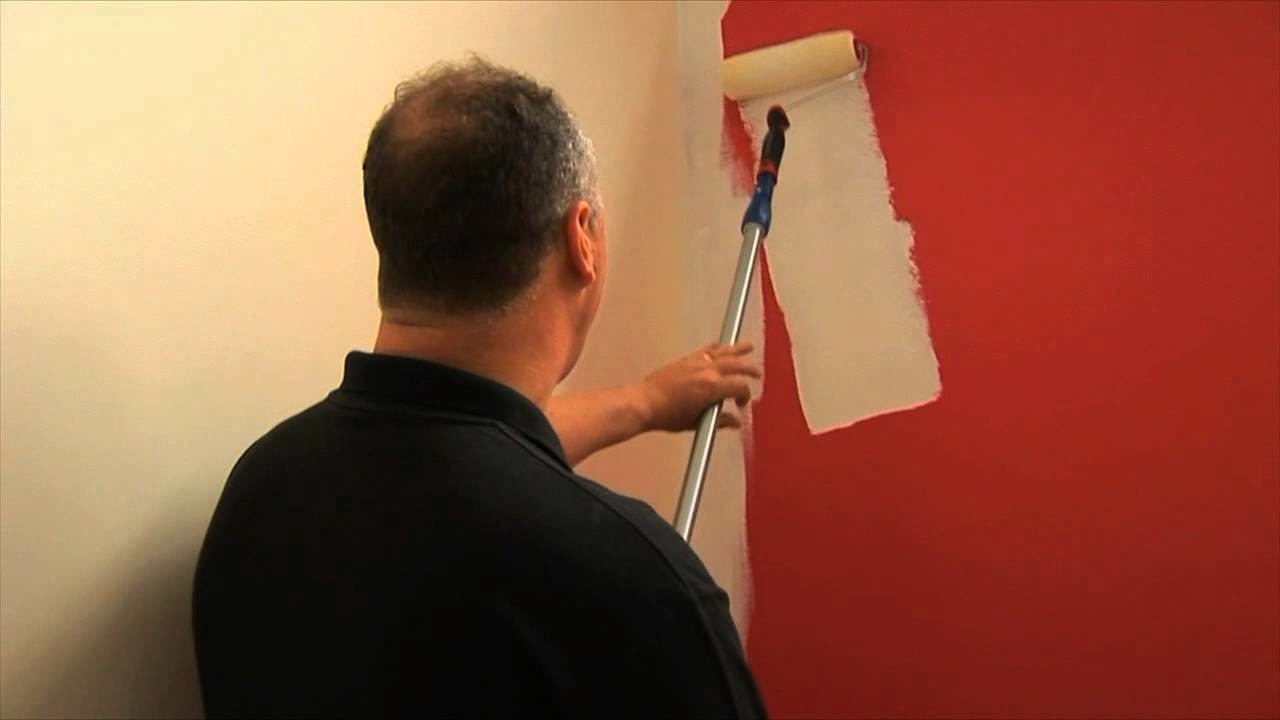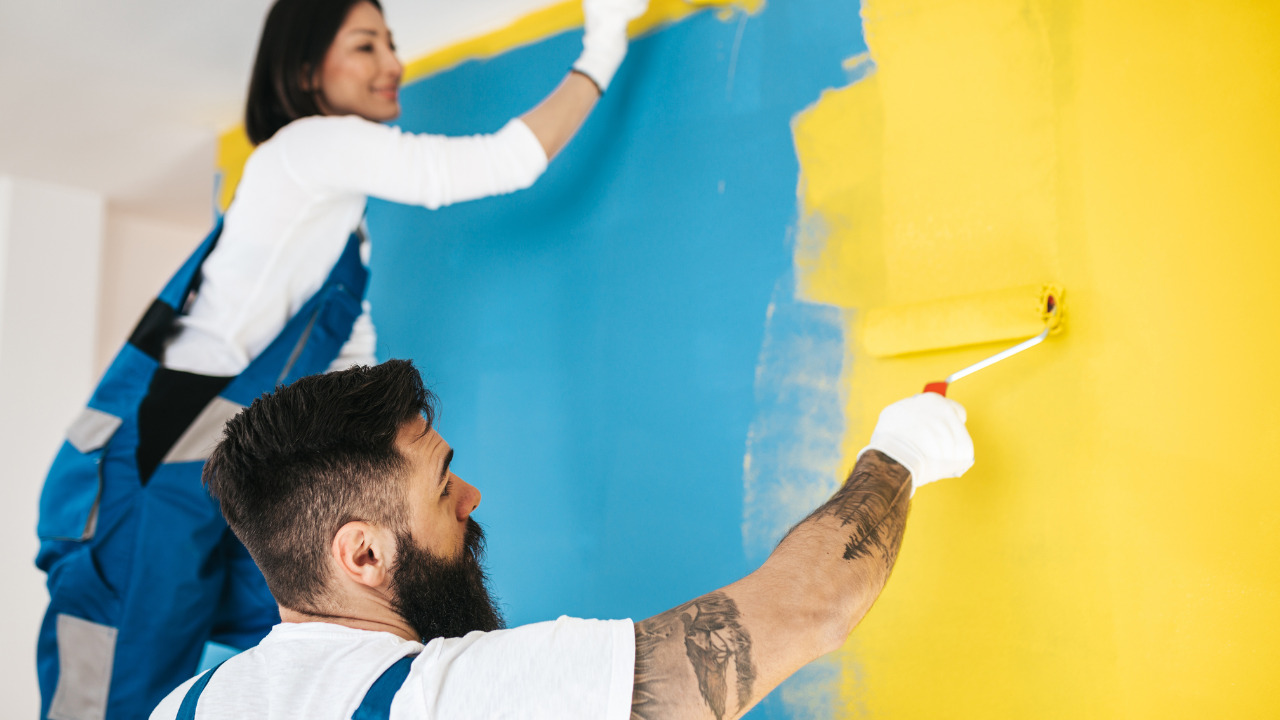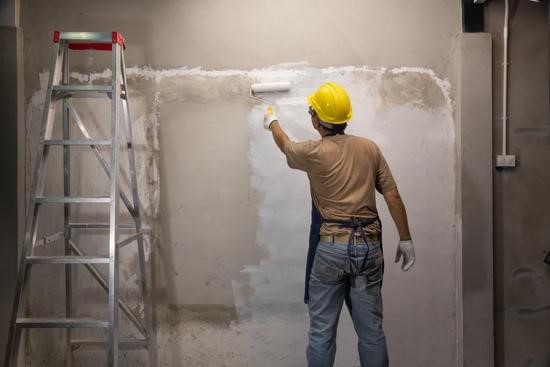Do the dark walls of your home make it look smaller? Do you want to repaint the dark walls so that your house lighten up? How to paint over dark walls? You can easily do that with a DIY home repainting project.
You can always give your home a fresh appearance with a fresh coat of paint. However, when things feel complicated and you wonder how to paint over dark walls, you just need a plan.
Let’s discuss some tips for painting a light color over a dark one. So grab your paintbrush, get plenty of primer, and let’s get started.
Table of Contents
5 Essential Steps for Painting Over Dark Colors
If you want to paint over a dark color, start with a plan. Here are some of the easy steps you should take to give your walls a light paint makeover:
1. Make a Painting Plan
Brightening up a wall color is a major transformation for your house color scheme interior. The overall effect you are trying to achieve may feel great. However, you should first consider the amount of work it will take to get there.
When you are going with a darker theme or going from neutral to neutral, you can easily get the job done with a primer coat or two coats of high-quality paint.
However, when you want to paint over dark colors and go lighter, you will have to go through quite some steps. This plan requires your utmost attention to detail before you can start layering on the new hue.
The more drastic you want to go from dark to light shade, the more steps it will take. Follow the steps below for a smooth and stress-free painting project.
2. Pick Up the Right Painting Supplies
If you have the right painting supplies at the outset, it will make a huge difference as you start painting a light color over a dark color. You must be familiar with the basic painting essentials. However, before you start your home improvement journey, make sure to add some more things to your list.
Make any necessary repairs to the walls before you start painting. If you have a smooth surface, painting over dark walls a light color will be an easy job. Fill in all the holes, nicks, or cracks with spackle. After the walls get dry, sand them with sandpaper.
Primer
Get a high-quality primer in the similar color you want to paint on the walls. You may get more luck with a gray-tinged primer instead of a white one, specifically if you aim for a bright, warm shade.
If you get a dark primer, it will mean you need fewer coats later on. It will also help prevent the original color from flashing through the new paint.
Paint Roller
A short paint roller is the way to go here. If you get too thick, the paint coverage may get splotchy. It will just end up creating more work for you in the long run.

High-Quality Paint
It’s never a good idea to compromise on the quality of paint you get. It’s especially true when you want to paint over a dark color and go light.
The more good quality the paint has, the fewer overall coats you will need, even with this big transition of going from dark to light.
A high-quality paint may be a little pricier, but you will end up saving money with a paint that will last for years to come.
You will also need other painting tools such as painter’s tape, paintbrushes, paint edgers, rolling trays, roller extenders, tarps, etc.
3. Prepare the Walls by Cleaning
The more smooth the wall surface is, the less trouble you will face while painting light over a dark color.
Prepare the walls by cleaning them off, since both dust and dirt can get in the way of an effective paint job. Use a dry dusting mop and wipe vertically along the entire wall. If there are some tough-to-remove stains, you can use a clean rag, warm water, and gentle dish soap. Take care of any imperfections in the drywall. If you find any old paint, carefully remove the paint from the wallpapers for a clean surface.
If you applied a fast-drying spackle, wait for about two hours before sanding. A standard spackle will take about 24 hours to harden before you sand. After that, put on your first coat of primer. However, test the primer first to see if it needs more time to set.
4. Prime the Walls
After sanding is done, it’s time to prime the walls. In most of the paint jobs, only one coat of primer will do the trick. However, it’s not the case when you are going from dark to light.
Now, you need at least two coats of primer. Don’t forget to let each coat dry fully before moving on. If you see a bit of muted color seeping through the primer, don’t worry. A primer isn’t meant to provide a complete coverup of the original color.
4. Get to Painting the Walls
Finally, it’s time to paint the walls.
How many coats will you need to apply? It depends entirely on how big the transition is between shades, which color you are covering up, and which color you are going to put on.
If your walls have red or orange color originally, painting a light color is going to be the trickiest. These colors are made with extremely rich pigments. These tend to seep through the cover paint, even after multiple primer coats.

Here are some tips to maximize the utility of your new paint:
Get enough paint on the roller. A heavy coverage is always preferable to a thin coverage. It will also take fewer coats of paint overall. However, don’t lay on the paint too thick as you may end up with blobs and drips. Merge your roller in the rolling tray, get a load of paint, and then use the angled part to wipe off any excess.
Paint in a zig-zag pattern and don’t go up and down. Aim to use the roller in an “M” or “W” shape. It will help ensure complete coverage and prevent streaks from showing up when the paint dries.
Cover the edges with every paint coat. This may get time-consuming when you are looking at three, four, or more paint coats. However, if you don’t stay consistent with the edging, your walls will get a dark noticeable border. Use a painter’s tape or a paint edging tool to save your time.
Let the paint dry fully between the coats. This could mean you have to wait for several hours from coat to coat. You may even need to wait a full day for the coats to get dry. Generally, the more time you give to paint drying, the better.
Wait Patiently and Let Your Paint Magic Work!
Don’t expect perfection right away. When you paint over a dark color, you will inevitably end up with some patches and imperfections. It will take some time to get the coverage that you seek. Remember! It’s worth putting in the work now rather than being unsatisfied with your paint job later.





